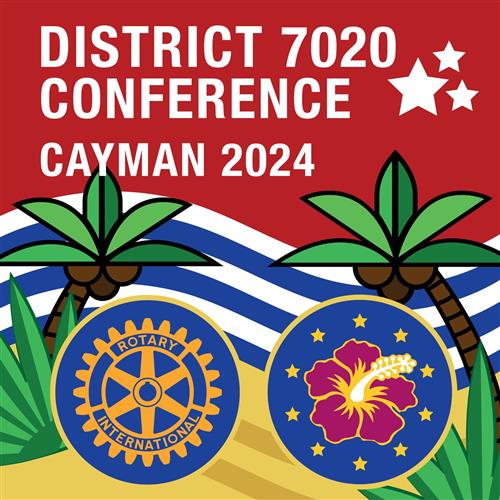World’s first peace park celebrates its 80th anniversary
Rotary News -- 21 August 2012

Youth Exchange Students from Canada and the United States hold flags aloft during the hands across the border ceremony in 2005. Photo courtesy District 5360
In a year when the RI theme is all about peace, the annual gathering of Rotarians from both sides of the U.S.-Canadian border at the world’s first peace park takes on even greater significance.
In 1932, Rotarians played a large role in convincing the governments of Canada and the United States to join Glacier National Park in Montana and Waterton Lakes National Park in Alberta, forming Waterton-Glacier International Peace Park.
Each year since, Rotarians from both countries have gathered for a weekend of fellowship and goodwill, an event that this year could include members from more than 200 clubs in four districts in southwestern Canada and the northwestern United States.
“When I heard this year’s theme was about peace I was thrilled. It fits so well with what our districts have been doing here for the past 80 years,” says Frances Leggett, governor of Canadian District 5360 and president of the Waterton-Glacier International Peace Park Association. “Peace means all sorts of things. Any sort of collaboration is really a means of promoting peace.”
“When all is said and done, ours is an organization of service that can lift others, and build peace one person at a time,” adds Canadian Monty Audenart, a past RI vice president, who has participated in the event.
The assembly alternates between the U.S. and Canadian sides of the border. This year it takes place in Kalispell, Montana, 14-16 September. Three days of speakers and events will be capped off by the most moving part of the assembly, when Rotarians join hands across a white ribbon symbolizing the border between their countries.
During the ceremony, Rotarians recite this pledge: “In the name of God we will not take up arms against each other. We will work for peace, maintain liberty, strive for freedom, and demand equal opportunities for all mankind. May the long existing peace between our two nations stimulate other people to follow this example.”
Youth exchange students from both countries take part whenever possible. “A few years back, we had a separate event for the youth exchange students, and at the Saturday banquet they all marched in carrying the flags of their nations. It was a very moving experience,” Leggett recalls.
Beginnings
The idea for the peace park originated eight decades ago, when the president of the Rotary Club of Cardston, Alberta, Joseph S. Low, attended a meeting at which Past District Governor Frank R. Freeze spoke eloquently on the subject of international fellowship. Low decided to pitch to his club the idea of arranging an annual goodwill meeting between Canadian and U.S. Rotary clubs on alternating sides of the border. The club heartily endorsed the idea and authorized him to make it happen.
The park was dedicated on 18 June 1932. At the ceremony, Canadian Prime Minister R.B. Bennett and U.S. President Herbert Hoover expressed sentiments that mirrored Low’s.
“It is my earnest hope that this great International Peace Park, stretching across our common frontier and in which citizens of both our countries may seek recreation, may forever remain a permanent memorial of all that neighbourly relations should be between adjoining nations,” Bennett wrote.
“Dedication of the Waterton-Glacier International Park is a further gesture of the good will that has so long blessed our relations with our Canadian neighbors, and I am gratified by the hope and the faith that it will forever be an appropriate symbol of permanent peace and friendship,” wrote Hoover.
Today, Rotarians govern the Waterton-Glacier International Peace Park Association. Canadians and Americans are equally represented on the 18-member board, and the presidency alternates between the two countries.
Adapted from a Rotary Canada story by Paul Engleman
Download the website sponsorship guide


